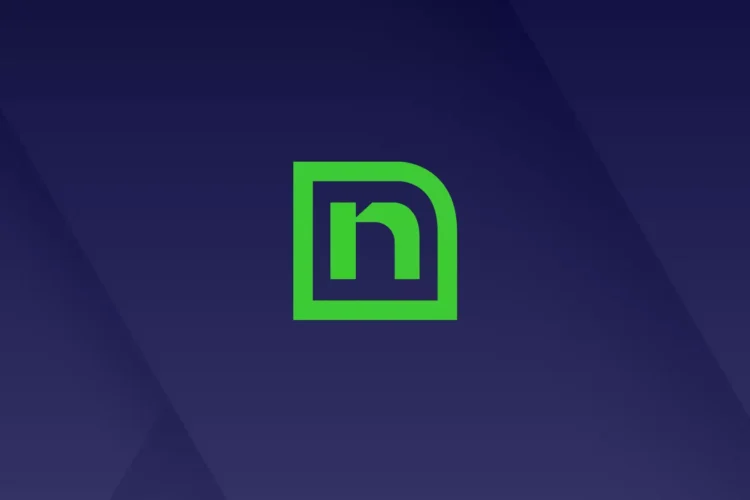Enterprise Content Management (ECM)
Transform Your Work Life
Streamline your content and document management with ECM, boosting your security and providing real-time access to critical information.
Reimagine Work with Intelligent Automation
Harness the power of enterprise content management (ECM) automation to significantly reduce the time spent searching for information, improve your compliance, and increase employee productivity. These wins don’t just streamline your overall operations, they also let your team focus on more strategic initiatives and boost your security and information governance, giving you peace of mind.

What is Enterprise Content Management?
Enterprise content management (ECM) is a set of processes, strategies, and technologies used to capture, manage, store, preserve, and deliver content and documents within an organization. It serves as a comprehensive approach to handling unstructured information across the enterprise.
We have so many processes that we can run this out in and it’s going to save so much time.
“We have so many processes that we can run this out in and it’s going to save so much time… and I think that’s where we’re going to realize the return on that investment.”

Lael Hall
IT Director, Ho-Chunk Nation
Why Enterprise Content Management
Unlock the Wide-Reaching Impact of ECM
Today, organizations across industries manage vast amounts of data, and doing so efficiently is crucial. Enterprise content management (ECM) technology offers a comprehensive, scalable solution to streamline your document management processes, enhance your security, and boost overall productivity. By investing in ECM, you can overcome the complex challenges you face and unlike new opportunities for growth and success.
Improved Efficiency
Streamline document management processes, reducing the time and effort required to locate, retrieve, and manage documents. This way, you get increased productivity and employees can focus on higher-value tasks.
Enhanced Security
Enforce security policies, make audits significantly easier, and track document activities, minimizing the risk of unauthorized access and ensuring compliance with regulations. This helps protect sensitive information and reduces the likelihood of data breaches.
Cost Reduction
By digitizing paper documents and automating workflows, ECM solutions significantly reduce paper consumption, printing, and shipping costs. Organizations can also save on physical storage space by eliminating the need for filing cabinets.
Better Customer Service
With real-time access to vital information, ECM solutions offer 360-degree visibility into the status of requests and transactions. As a result, you enjoy faster and more accurate responses to customer inquiries, improving overall customer satisfaction.
How to Use It
Empower Your Business with Comprehensive ECM Solutions
ECM technology offers a robust solution that helps you tackle the challenges of document management, from security and accessibility to collaboration and compliance. By implementing ECM organizations can unlock new levels of productivity, streamline their operations, and ensure seamless, secure access to vital information.
Capabilities Include
- Document Capture & Storage
- Process Automation
- Real-Time Tracking
- Integration with Business Applications
- Mobile Access
- Version Control & Document Management
- Compliancec Management
- Collaboration Tools
Document Capture & Storage
Efficiently capture, store, and retrieve both paper and electronic data in a single electronic location, centralizing your documents for easy access and management.
- Digitize paper documents for streamlined storage
- Store electronic data securely in one centralized location
- Retrieve documents quickly and easily
- Ensure consistent document management practices
Process Automation
Automate your business processes to reduce manual tasks and ensure consistent and efficient operations. This way, you can streamline your workflows and improve your productivity.
- Automate document routing and approval workflows
- Reduce manual data entry and processing
- Track document statuses in real-time
- Ensure compliance with automated processes
Real-Time Tracking
Unlock real-time visibility into your document statuses and workflows. This enables you to monitor their progress and make informed decisions quickly.
- Monitor document progress in real-time
- Track workflow statuses and updates
- Identify bottlenecks and inefficiencies
- Make data-driven decisions promptly
Integration with Business Applications
ECM Systems can seamlessly integrate with your existing business applications, enhancing your overall efficiency while allowing you to take advantage of the latest technology investments.
- Connect ECM with CRM, ERP, and other systems
- Ensure smooth data flow between applications
- Enhance collaboration across platforms
- Maximize the value of existing technology
Mobile Access
Gain mobile access to documents and information, letting your employees access the information they need from wherever they may be, whether they’re working remotely or doing fieldwork.
- Access documents securely on mobile devices
- Approve workflows on-the-go
- Retrieve information anytime, anywhere
- Support remote work and collaboration
Version Control & Document Management
Access robust version control and document management capabilities, reducing the risk of errors and ensuring reliable access to the most up to date versions of documents.
- Manage document versions and revisions
- Centralize document control and access
- Prevent errors with version tracking
- Ensure consistency in document management
Compliance Management
Ensure adherence to regulatory requirements by automating document retention schedules and providing audit trails for all document activities.
- Automate retention and disposition schedules
- Generate audit trails for compliance
- Ensure secure access to sensitive information
- Facilitate regulatory audits
Collaboration Tools
ECM lets you boost your teamwork capacity by allowing multiple users to work on documents simultaneously and tracking changes in real-time.
- Enable real-time document collaboration
- Track changes and version history
- Support team workflows and approvals
- Improve communication and coordination

Deep Industry Expertise
Streamline Your Content Management, Whatever Your Industry
Our extensive experience enables us to develop enterprise content management solutions that solve your most complex document management challenges. We create customized solutions for you using enterprise content management technology and other advanced technologies and integrate them with your existing systems to solve the problems that are unique to your organization and ensure secure, efficient, and seamless handling of all your content.
Customer Stories
Every Success Story Starts With a Vision
Our customers inspire us every day. It’s our privilege to help them achieve their goals and reimagine what’s possible.
Speaking on the PeopleSoft integration, that’s probably my biggest customer because it covers all departments… and then we integrated with Accela, which is our permit tracking system.
“Speaking on the PeopleSoft integration, Jim said, “That’s probably my biggest customer because it covers all departments. We had 50 web scanning licenses back in the day, and then we integrated with Accela, which is our permit tracking system.”

Jim McKenney
Project Manager, Sonoma County
Accounts payable has been transformed from a paper-pushing payment process to a flexible, time-saving solution.
“I love this solution. Accounts payable has been transformed from a paper-pushing payment process to a flexible, time-saving solution. We no longer spend time pushing physical paper through the process and filing that paper once we’re done with it.”
Director of Finance, Wis-Pak
I don’t know how many times we’ve heard how much time we were going to reduce or how excited staff was to work with the new solution.
“It was really exciting to see a customer so excited about a solution. I don’t know how many times we’ve heard how much time we were going to reduce or how excited staff was to work with the new solution, so that’s always great to hear.”

Supervisor of the Document Management Unit in the Bureau of IT Services | State of WI Department of Transportation
There is no question in my mind that without ECM, we certainly wouldn’t be where we are today.
“There is no question in my mind that without OnBase, we certainly wouldn’t be where we are today. And that is completely different from where we were 10 years ago. I think we are poised well for the future because of what we have been able to accomplish with OnBase.”

OnBase Developer, Utica National Insurance Group
They know how to integrate ECM with healthcare platforms like EMR and design insurance-specific workflows like claims management.
“Naviant has deep industry expertise in markets like insurance and healthcare. They know how to integrate ECM with healthcare platforms like EMR and design insurance-specific workflows like claims management.”
Executive, Insurance Customer
Technologies
Combine Technologies for Tailored Solutions
We solve complex challenges by finding the right combination of tools – sometimes in unexpected ways. Our blend of technologies, from ECM to automation platforms, lets us build solutions that go beyond the obvious answers. Together, we explore all possibilities to create a custom mix that fits your needs.
Featured Technologies:
Intelligent Document Processing (IDP)
IDP uses artificial intelligence to reduce manual effort and automatically extract unstructured and semi-unstructured data from various document types such as invoices, contracts, EOBs, claims, and forms.
Artificial intelligence (AI)
Artificial intelligence (AI) lets systems continually learn from data and identify patterns to enable smarter decisions with very little human intervention.
Workflow Automation
Use configurable workflows to automate tasks, route documents, and manage processes with built-in rules and custom forms.

- Blog
- Enterprise Content Management (ECM)

- Customer Story
- Accounting & Finance, Enterprise Content Management (ECM)

- Video
- Enterprise Content Management (ECM), Intelligent Automation

- Whitepaper
- Digital Transformation, Enterprise Content Management (ECM), Human Resources, Workflow Automation
Experience the Future of Work Today
Have an innovative idea you want to implement at your organization but not sure how to execute it? Contact our innovation team to collaborate with you to turn your magic button idea into reality.
Fields marked with * are required